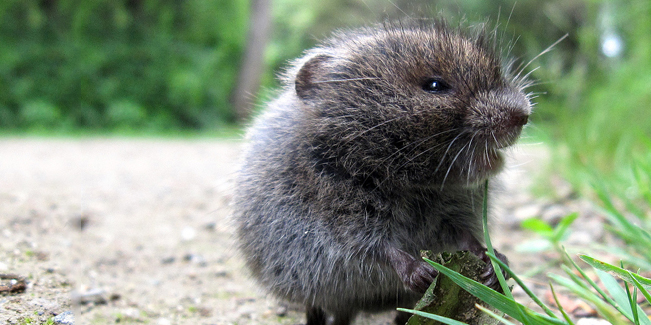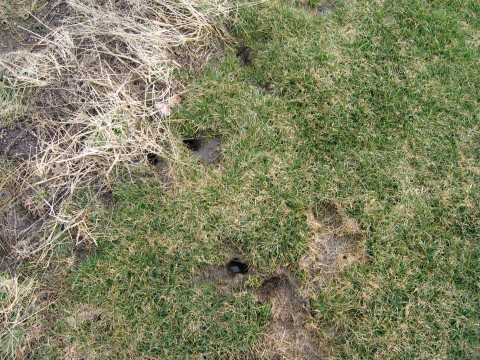Comprehensive Vole Pest Control Services in Utah
Comprehensive Vole Pest Control Services in Utah
Blog Article
Mastering Vole Pest Control: Extensive Insights on Infestation Avoidance and Therapy Strategies
As residential property owners and caretakers, the presence of voles can position a significant difficulty to maintaining the stability of our outside areas. Comprehending the intricacies of vole behavior is essential in developing reliable bug control strategies. By recognizing the refined indicators of vole problem beforehand, we can take proactive steps to stop prevalent damage. In this discussion, we will certainly discover the nuances of vole behavior, delve into the identification of problem signs, and reveal one of the most efficient avoidance and treatment techniques. Keep tuned to uncover the understandings that will certainly equip you to grasp vole insect control and protect your home against these elusive rodents.
Comprehending Vole Actions
Examining the foraging patterns of voles supplies useful understandings into their habits and habitat preferences. Voles, little rodents resembling computer mice, are herbivores understood for their below ground tunneling activities. By observing their foraging behavior, researchers can acquire a better understanding of where voles choose to develop their habitats and the extent of their ecological impact. Voles are prolific dog breeders, with a solitary female with the ability of producing a number of litters in a year, making it important to understand their behavior for effective pest control methods.
Research study shows that voles exhibit careful feeding routines, preferring seeds, roots, and roots. This nutritional choice influences their foraging patterns, leading them to locations abundant in plants and ground cover. In addition, voles are understood to produce fancy passage systems for foraging and nesting objectives, showing a high level of adaptability to their environments.
Comprehending vole behavior is vital for applying targeted bug control measures that interrupt their habitat preferences and foraging tasks (vole control). By studying their habits, professionals can develop a lot more efficient avoidance and therapy approaches to handle vole problems

Identifying Signs of Vole Problem
Vole problems can be found by identifying certain signs of their visibility in a location. Among the most typical indicators of a vole infestation is the presence of surface runways. Voles create networks of slim paths on the ground that are commonly about two inches vast. These runways are typically located in verdant areas or beneath compost or ground cover where voles can relocate openly and search for food.
One more vital indicator of vole problem is the presence of little burrow openings in the ground. Furthermore, voles are known to leave behind chewed plant stems, origins, and light bulbs near their burrow openings, showing their feeding task in the area.
Locating these droppings along runways or near burrow openings can verify a vole problem. By being alert for these indicators, residential property owners can promptly address vole infestations and avoid additional damage.
Implementing Proactive Prevention Actions

Additionally, employing natural vole deterrents like castor oil-based repellents or killer urine can work as effective safety nets. It is also recommended to routinely examine exterior spaces for any indications of vole task, such as paths or delve openings, this to attend to potential problems without delay. vole yard damage. By embracing these proactive avoidance approaches, homeowner can considerably decrease the possibility of vole damage and keep the wellness and visual appeals of their landscapes
Efficient Therapy Strategies
Integrating targeted capturing methods and using approved rodenticides are essential parts of reliable therapy techniques for handling vole invasions. Capturing can be a reliable means to decrease vole populaces, particularly when placed purposefully in their energetic paths. Snap traps and live catches can both work, with the latter enabling for the capture and moving of voles. When making use of rodenticides, it is essential to adhere to safety and security guidelines to avoid injury to non-target animals and animals. Location rodenticides in secure bait stations to minimize risks to unplanned targets. Furthermore, habitat adjustment, such as decreasing ground cover and eliminating sources of food, can aid hinder voles from infesting a location. Routine monitoring and upkeep are additionally essential aspects of successful treatment techniques to ensure that vole populaces are maintained under control. By integrating trapping, rodenticides, environment alteration, and regular tracking, efficient vole pest control can be accomplished.
Monitoring and Upkeep Tips
Normal surveillance enables for see this site the early detection of vole activity, making it possible for punctual intervention before infestations aggravate. To properly keep track of vole populaces, tactically put traps can be used in vole runways or near burrow entrances.
In addition, maintaining a well-kept and neat landscape is vital in vole avoidance. Cleaning away debris, such as stacks of timber or dense vegetation, eliminates possible vole habitats. Routinely trimming and trimming lawns plants helps in reducing vole concealing areas and minimizes their access to food sources.
In addition, recurring upkeep of physical obstacles, such as fences or cable mesh, is important to avoid vole invasion. Examining and repairing any damages to these frameworks ensures that vole control remains reliable in safeguarding properties from invasions. By including these tracking and maintenance methods into a detailed vole parasite control plan, individuals can effectively manage vole populations and safeguard their residential or commercial properties from damage.
Conclusion
Finally, understanding vole parasite control needs a strong understanding of vole habits, the capacity to identify signs of invasion, implementing proactive prevention procedures, efficient therapy methods, and constant monitoring and upkeep. By taking a comprehensive technique to vole control, individuals can successfully manage and prevent problems, inevitably securing their building and bordering environment from important source damages caused by these small rats.
In this discussion, we will explore the subtleties of vole habits, dive into the identification of infestation signs, and discover the most reliable prevention and therapy approaches.Including targeted capturing techniques and utilizing accepted rodenticides are important elements of effective therapy strategies for managing vole invasions. To successfully keep track of vole populaces, tactically placed traps can be utilized in vole paths or near burrow entries. Inspecting and repairing any type of damages to these structures guarantees that vole control stays reliable in securing buildings from problems. By incorporating these monitoring and maintenance techniques into a thorough vole bug control plan, individuals can efficiently handle vole populaces and safeguard their properties from damage.
Report this page